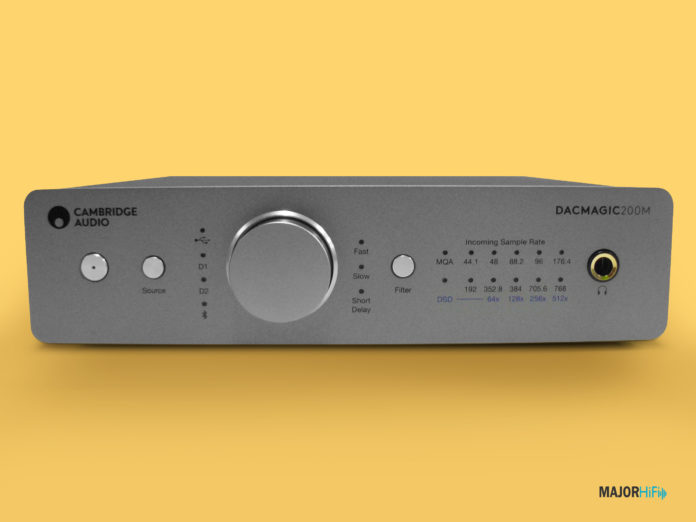A solid desktop DAC/Amp can be hard to come by if you’re not willing to put forth the dough. Most of my preferred heavy amps range from the eight hundred to thousand dollar range and beyond. I recently got to look at the Cambridge Audio DACMAGIC 200M, a chunky desktop amplifier for only $499. From the looks of it, this DAC/Amp/Bluetooth receiver combo might be exactly what I’m looking for, but at the end of the day it all comes down to the sound of course. Let’s see what the DACMAGIC 200M has to offer.
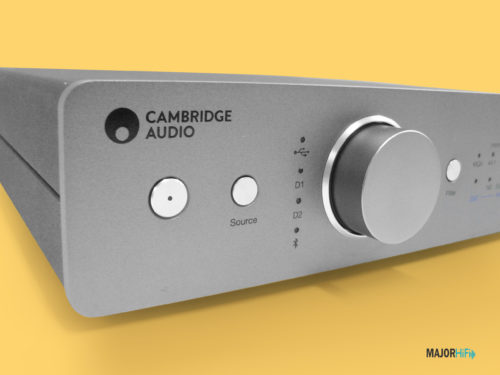
Build
On the outside, the DACMAGIC 200M looks like a hefty piece of machinery, but it’s rather lighter than it looks. Although the device is quite big, the chassis feels mostly hollow, so it’s easy to pick up. However, that doesn’t mean the build is cheap or flimsy. In fact, the materials used here complete a compact structure that can easily be placed on any desktop surface. It also fits right in with any existing audio setup you might have. The sleek silver flourish, adds to the overall solidity of the system, is made from durable steel. This combines with an aluminum chassis that makes for an all-around classy-looking amplifier. My only reservation about the build would be the volume knob, which feels like it’s too tight. The resistance is quite significant, and going in to adjust the volume at any point isn’t as user-friendly as it should be.
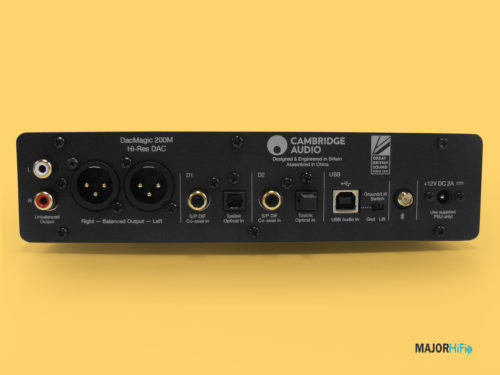
Ins and Outs
As far as headphone connectors go, the DACMAGIC 200M only offers a single quarter-inch input on the front of the device. The rest of the face is made up of LED lights that label the DACs features. You can track your incoming sample rate and MQA compatibility. Next, you can cycle through three different filters like fast, slow, and short delay that all affect the response of the signal flow. You’ll also be able to easily select what source you’re using at the push of a button. If you’re using the DAC, analog, or Bluetooth, this is where you’d look.
The rear of the device is where you’re going to find all the input and output options you need, and Cambridge Audio offers a lot here. First, you have an unbalanced left/right RCA and a left/right balanced 3-pin XLR output. Two channels of SPDIF coaxial and Toslink inputs are also available. Then you have your USB audio input for the DAC, which gets its own ground/lift switch. Bluetooth can be accessed when screwing the supplied antenna into the proper port. Finally, you have a power supply connector that uses 12V DC.
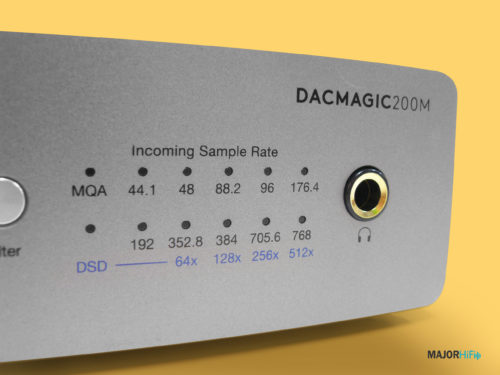
Design
Underneath the hood is a host of components that make up the DACMAGIC’s high-resolution sound. The main ingredient is its dual ESS Sabre chipset that can handle PCM and DSD signal inputs that can run at resolutions up to 32-bit/768kHz and DSD512 respectively. The dual DAC chips ensure proper channel separation with low noise and heightened dynamic range. Listening to CD-quality audio and MQA is possible to stream. I was mainly able to run some MQA tracks and sample rate of 48kHz for most others using Tidal and Spotify.
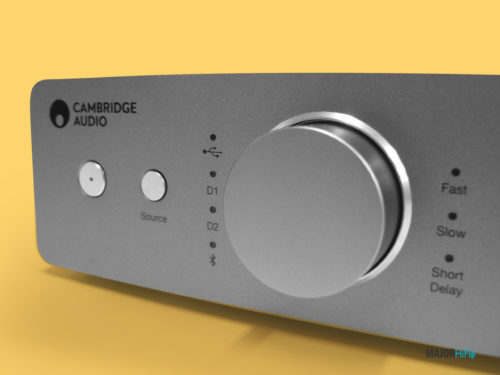
Sound Quality
Depending on your sample rate, or MQA resolution, the DACMAGIC 200M can offer a variety of details and textures to enjoy. Even though I tested a few different headphones with the amp, I found a common trait between them almost immediately. The level of separation hit me instantly, with a significant amount of air in between sound elements. It feels like the width of the soundstage is stretched out, but with instruments still sounding natural and clear. Musically, the tracks appear with a lot of breathability, creating a highly spacious image that features a satisfying level of depth. If I could sum up the complete timbre of the DACMAGIC 200M I would say it was impactful but clean, with a smooth tonality and a pleasing amount of lift.
Beyerdynamic DT1990
I had to resort to an old favorite when trying out this amp for the first time. This is unsurprisingly where the soundstage started to make a huge impression on me. I’ve listened to the 1990’s with a variety of systems, and not a whole lot of them could reach the pure amount of air added here. The headspace didn’t become completely outward, but the spatial imaging was still incredibly immersive. It brought a level of fullness to the 1990’s that should sound like the ideal transparency when listening to a headphone like this.
Grado Hemp
It was all about the midrange when pairing the Hemp with the 200M. I found the Hemp to have the smoothest tonality of all the headphones I tested, brought out with more musicality by the amp. The standout here was the mid-bass, which brought some great tump to percussion instruments. It made the heavy rock ballads from the new Weezer album all the juicier. Showcasing the versatility, the more mellow string sections of “Ok Human” were even more lively and texturally pleasant here. When the music gets slower and more twinkly, the more the DACMAGIC responds with timbral sweetness.
Audeze LCD 2 Classic
If the Hemp had the standout mids, then the LCD 2 hand the standout highs. I was particularly a fan of the twinkly resonance of acoustic guitars. This timbre was best showcased on the track “Interlude: Annabell” by Fath and the Muse, which danced up and down the soundstage with a certain grace. As far as articulation goes, the LCD 2 faired the best response of the three, receiving the clearest detail retrieval from the amp. The soundstage was tighter here, but the wide separation remained intact.
Summary
If you’re in the market for a sizable desktop DAC/Amp but can’t chalk in the money for the more high-end systems, the DACMAGIC 200M is the way to go for me. Not many devices at this price range can offer this much clarity and separation while supporting MQA and other high-resolution sample rates. For $499 you get a simple, easy-to-use amplifier that looks great, and has a lot of fidelity to showcase. The volume knob is my own real gripe, but looking past that, the positives qualities overshadow it. Whether you’re looking for an amp, great DAC, or pre-amp, the DACMAGIC almost has it all.
Pros and Cons
Pros: Solid build, Dual DAC chips, MQA support, Great separation, Price
Cons: Volume knob
The Cambridge Audio DacMagic is available on Amazon.
MAJORHIFI may receive commissions from retail offers.


